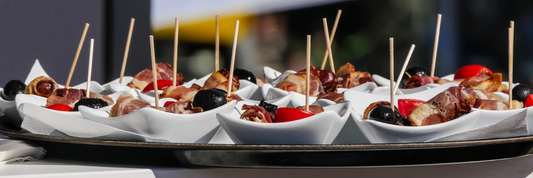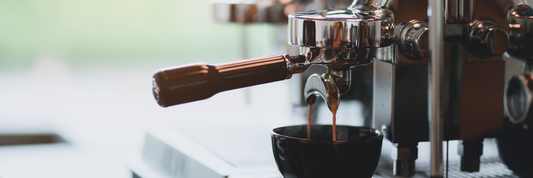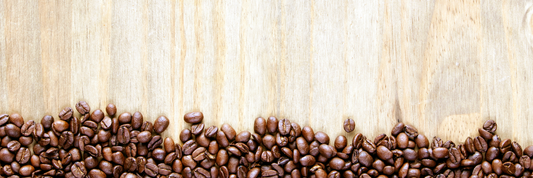One of the most popular types of packaging for coffee shops and catering companies is paper cups. How can the quality of a paper cup be determined? Does the process of paper cup manufacturing affect the paper cup's quality? In today's article, we'll start from the beginning to determine the ideal paper cup for your coffee shop.
Discover Paper Bowl Manufacturing Process
Type of Paper Cups Used for Coffee Shops and Catering Service
Coffee shops and catering services use a variety of paper cups, each with its own advantages and disadvantages. The most common types include:
- Single-walled paper cups: These are the most basic and affordable type of paper cup. They are typically made from 2-ply paperboard and are not insulated, so they can get hot to the touch with hot beverages. They are best for cold drinks or for short periods of time with hot drinks.
- Double-walled paper cups: These cups have two layers of paperboard with an air gap in between, which helps to insulate the drink and keep the cup cooler to the touch. They are more expensive than single-walled cups, but they are a good option for hot drinks.
- Ripple wall paper cups: These cups have a corrugated inner lining that helps to insulate the drink and prevent the cup from getting too hot to the touch. They are a good option for both hot and cold drinks.
To ensure customer experiences, paper cups can be used with lids or sleeves. They are designed in different sizes and shapes to meet business needs and requirements.
Uncoated Paper Cups, what is it?
Can you use paper cups for hot water?
Which Disposable Coffee Cups Are the Best for your Coffee Shop?
What Are Paper Cups Made of?
As how paper bowl made, paper cups have two components: paperboard and coating.
Paperboard
This provides the sturdiness and structure of the cup, forming its base. In simple terms, it is thick paper composed of several layers that are compressed together, frequently with recycled paper content. Consider it to be the "skeleton" of the container.
Different types of paperboards are used to make paper cups which includes:
- Cupstock
- SBS (Solid Bleached Sulfate) Board
- Unbleached Kraft Paperboard
- Coated Unbleached Kraft Paperboard (CUK)
- Bamboo Paperboard
Coating
This thin coating is essential for preventing leaks and keeping the cup liquid-proof. It can be formed of a variety of materials and is often applied to the paperboard's interior and outside. Coating can be made of:
- Polyethylene (PE): This is the most common coating, considered safe for food contact and offering good leak resistance.
- Wax: A natural alternative to PE, often used in cups for cold beverages. It might not be as heat-resistant as PE.
- Bio-based materials: Emerging options like PLA (polylactic acid) made from plant starch are gaining traction for their compostable properties.
- While these are the two main components, some paper cups might have additional layers for specific functionalities:
- Inner layer: Some cups, especially for hot beverages, might have an extra thin layer of PE or wax inside for enhanced heat insulation.
- Bio-based coatings: In eco-friendly cups, the inner layer could be made from PLA or sugarcane bagasse for added insulation and biodegradability.
How Are Paper Cups Made?
There are several steps to manufact paper cups, which are listed below:
Preparation of Paperboard: The paperboard is unwound from large rolls and undergoes a process to ensure uniform thickness and quality.
Printing (Optional): If the cups are to be printed with branding, logos, or other designs, this step involves using printing machines with food-safe inks.
Coating (If required): The paperboard may be coated with a layer of polyethylene or another suitable material to make it resistant to liquids. The coating process can involve applying a thin layer to one or both sides of the paperboard.
Die Cutting: A die-cutting machine shapes the paperboard into flat blanks, each representing the shape of a cup. The size and shape depend on the cup design.
Forming: The flat blanks are fed into a cup-forming machine. This machine uses heat and pressure to mold the flat blanks into the cylindrical shape of a cup. The bottom of the cup is sealed during this process.
Sealing: The formed cups are sealed at the seams to ensure they are leak-proof.
Rim Curling: The top edge of the cup is curled to create a smooth and comfortable drinking surface. This can be a separate step or integrated into the forming process.
Quality Control: The cups undergo quality checks to ensure they meet specific standards. This may include checking for leaks, inspecting the printing quality, and ensuring the cups conform to size and shape specifications.
Packaging: The finished paper cups are packaged in stacks or sleeves for distribution.

Are there differences between making single wall- paper, double-wall and ripple wall paper cups?
Each type for hot beverages has its own features, therefore, it exists differences during manufacturing to create the differences. Here is a table showing the differences:
|
Feature |
Single-Wall |
Double-Wall |
Ripple-Wall |
|
Paperboard |
Single layer, typically cupstock |
Two layers, often SBS board |
Single layer, corrugated |
|
Shaping |
Straightforward forming process |
Precise alignment and bonding of layers |
Requires corrugating before forming |
|
Coating |
One layer inside and out (PE or wax) |
Separate coating for each layer, sometimes heavier on inner |
One layer inside and out, potentially heavier on ridges |
|
Rim rolling |
Standard flanging process |
Requires additional care to ensure both layers bond |
Similar to single-wall, adjustments for ridges |
|
Printing |
Possible on both sides, surface texture might affect ink adhesion |
More common on outer layer due to potential unevenness |
Possible on both sides, but less common on inner |
|
Complexity and cost |
Simplest and most cost-effective |
More complex and expensive due to additional layers and bonding |
Falls between single and double-wall |
|
Insulation |
Lowest |
Highest |
Moderate |
|
Strength |
Moderate |
Highest |
High |
These differences give each kind of cup its own special qualities. Making the distinction will aid your business in selecting a more suitable cup.
- Single wall paper cups are the best option for a business searching for inexpensive cups that can be used for cold beverages.
- Double wall paper cups and ripple wall paper cups are options to consider if a business requires a cup that can hold heat longer and provide a better experience for consumers.
What Does Knowing Process of Paper Cup Manufacturing Help Your Business?
Knowing the paper cups manufacturing helps business
Entrepreneurs:
- Choose best cups for your audience and budget (insulation, strength, sustainability).
- Optimize costs by understanding materials and features.
- Innovate with unique or eco-friendly cups.
- Improve quality control and supplier management.
Marketing & Sales:
- Craft compelling product stories around craftsmanship, materials, and sustainability.
- Target marketing to specific customer segments based on preferences and concerns.
- Confidently answer customer questions about materials, safety, and environmental impact.
Sustainability-focused businesses:
- Choose eco-friendly options like recycled materials, bio-based coatings, and sustainable practices.
- Communicate your cups' sustainability credentials to customers.
- Advocate for industry-wide improvements in sustainability.
To put it briefly, knowing how paper cups are created can help your food business choose the best kind of cup while also gaining numerous other benefits for the brand, such as improved sales and marketing.




